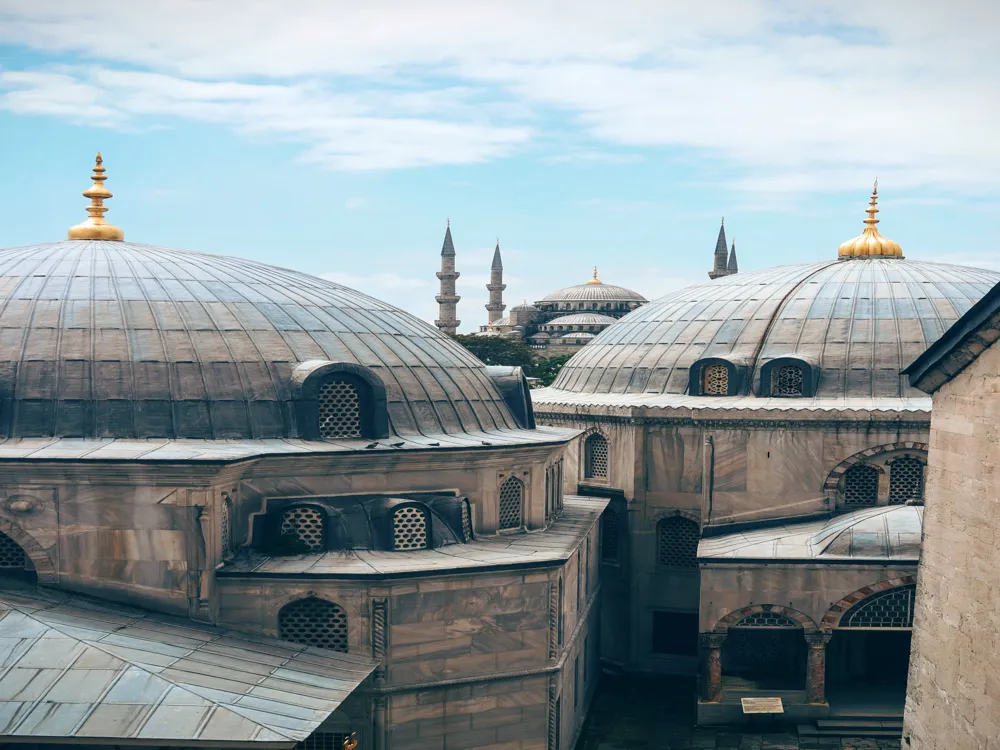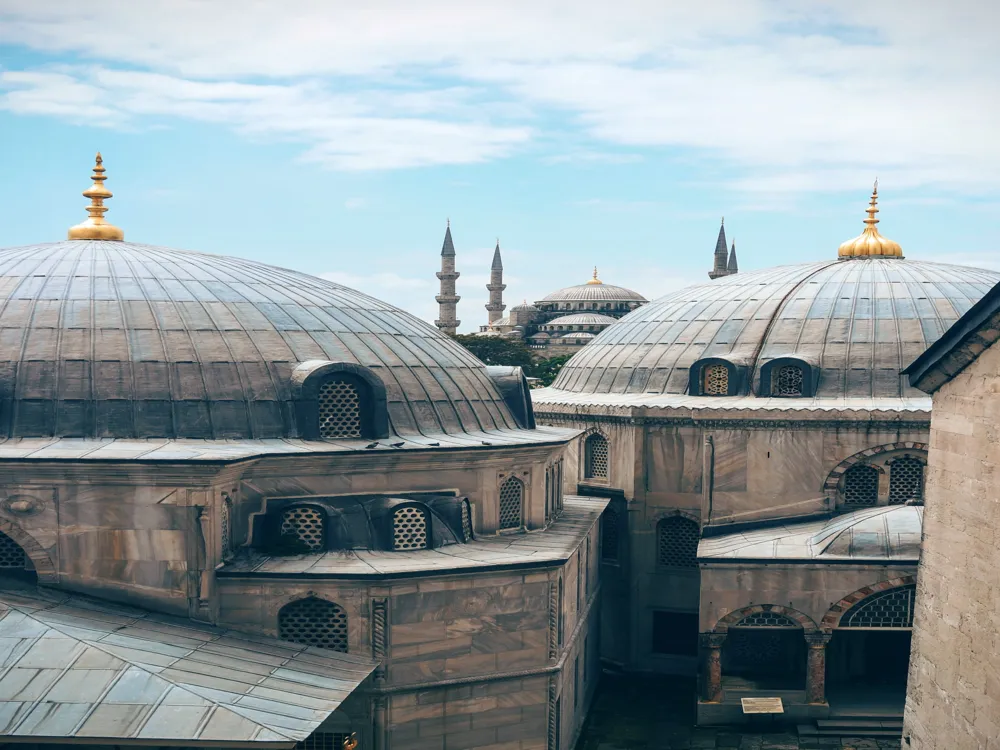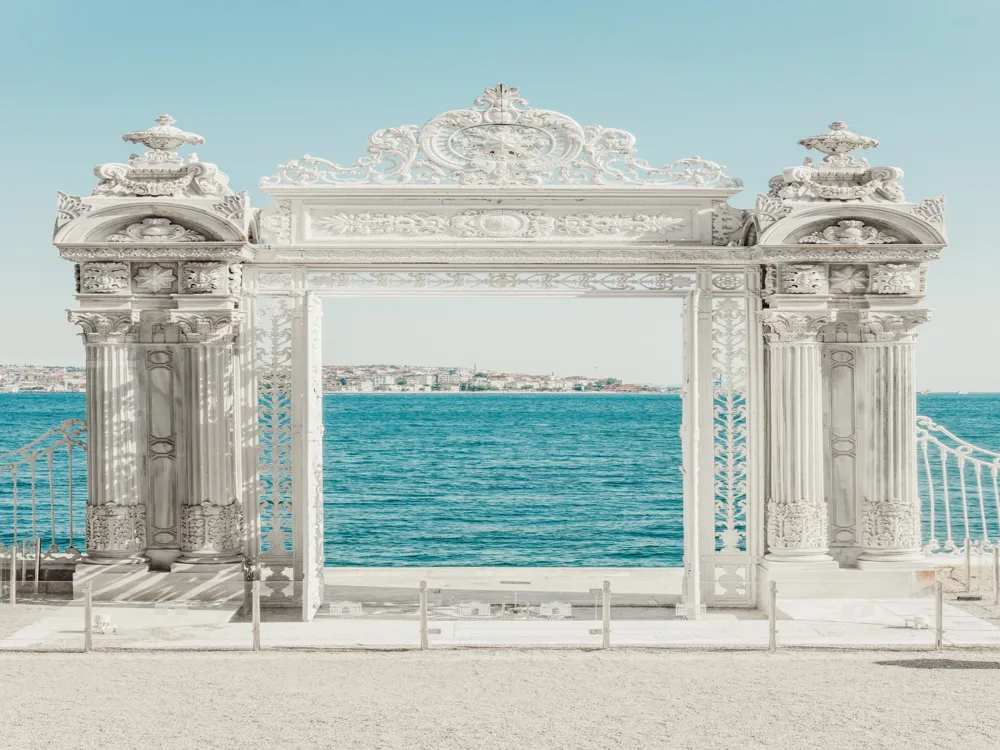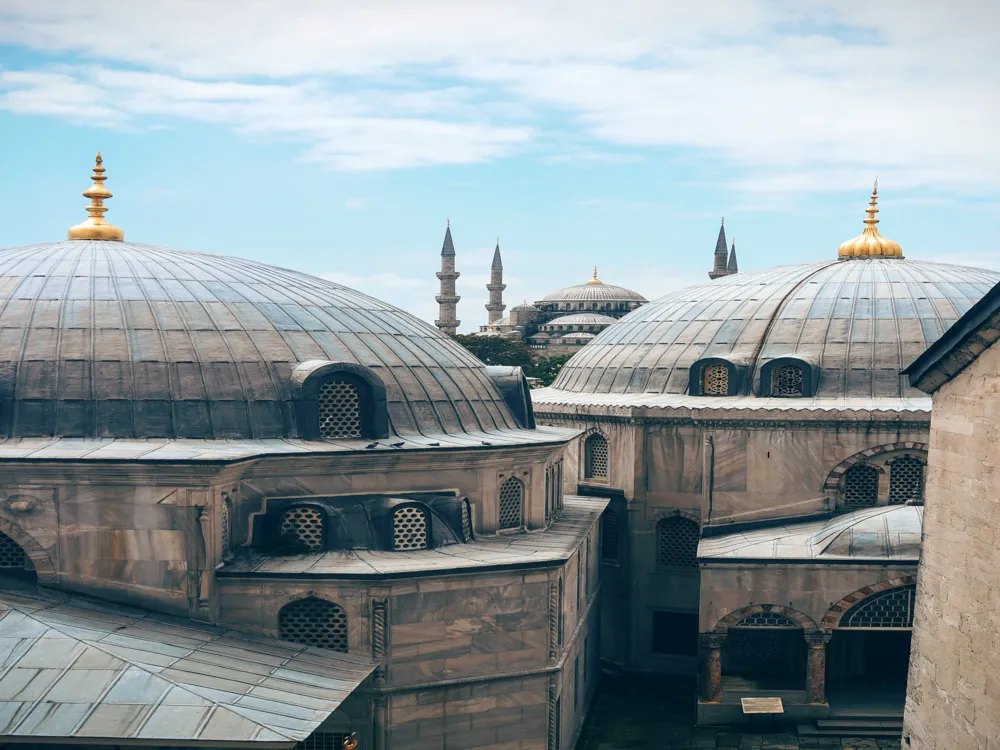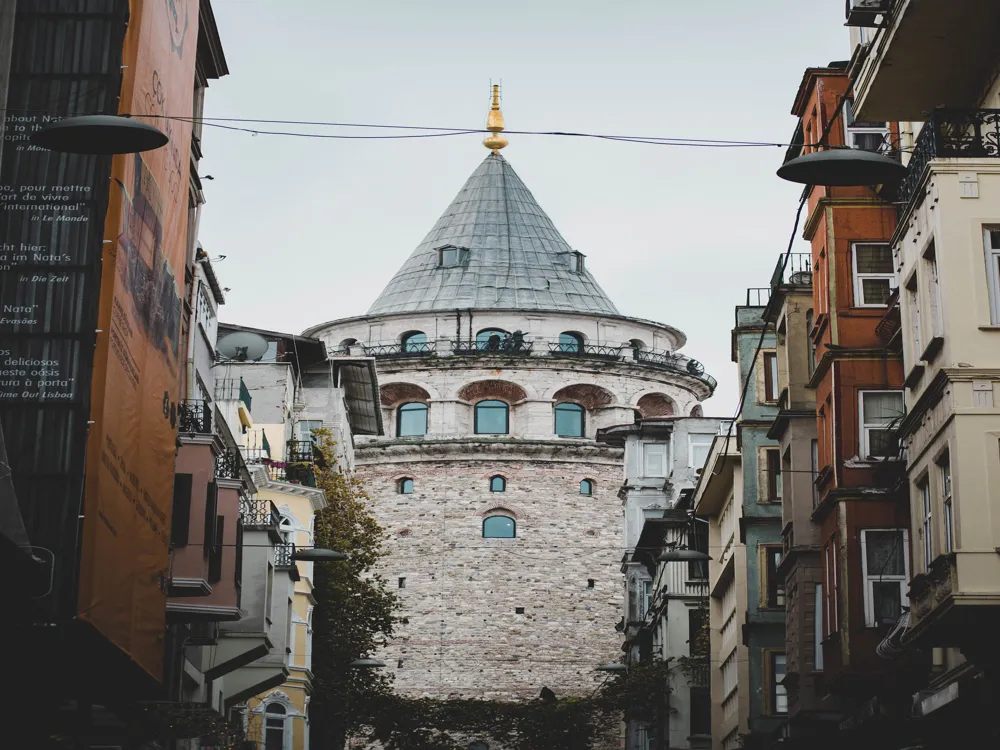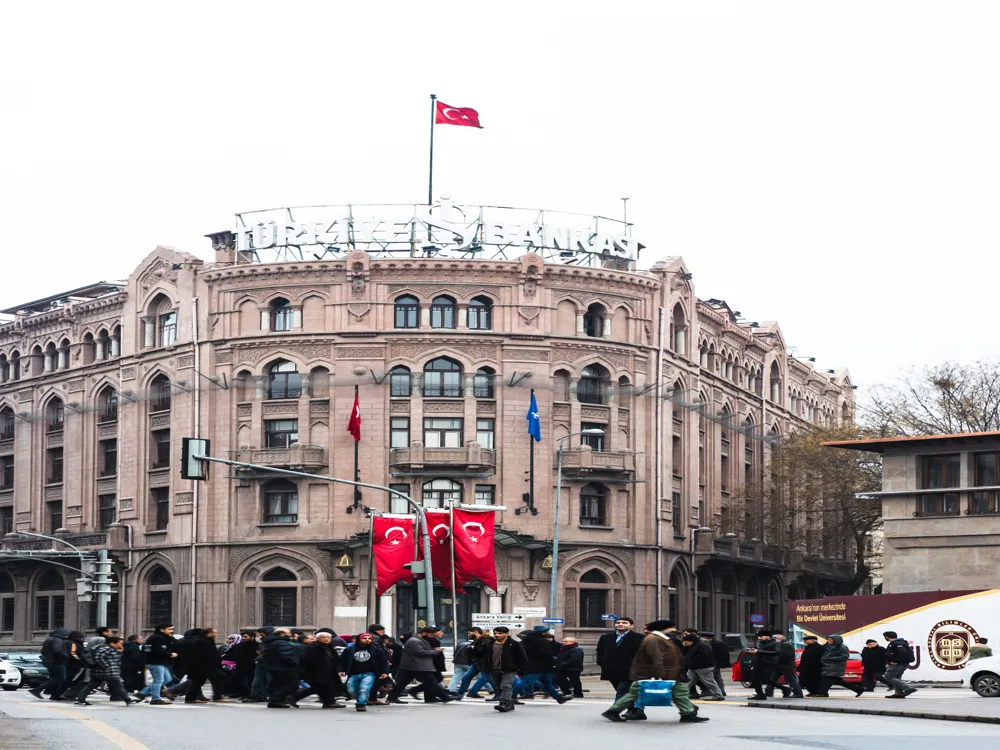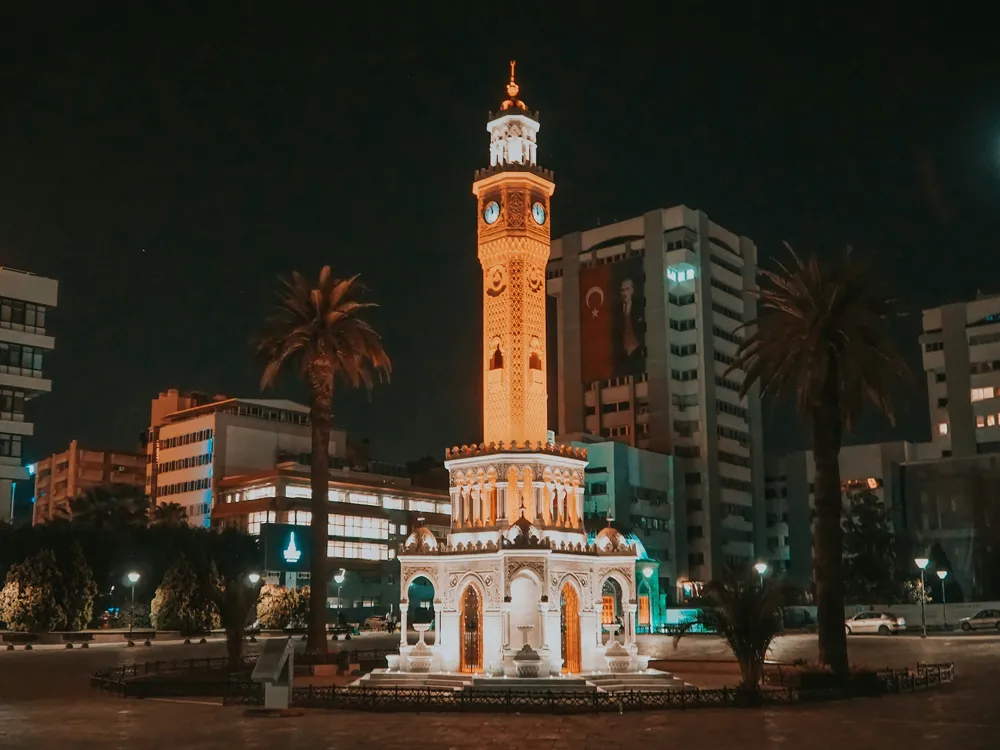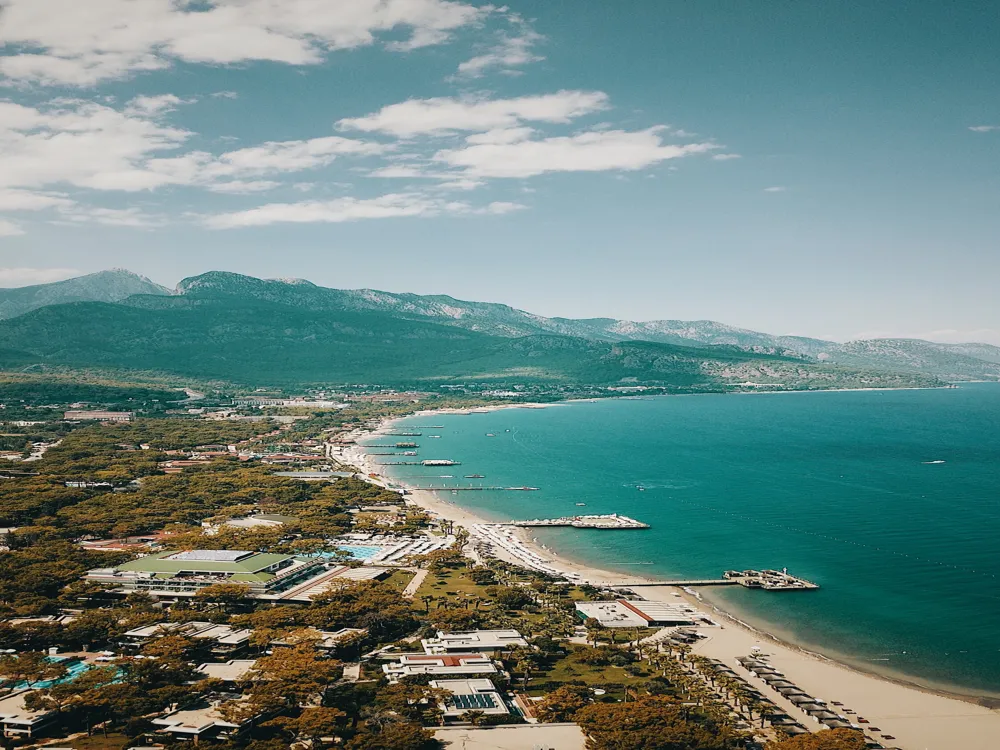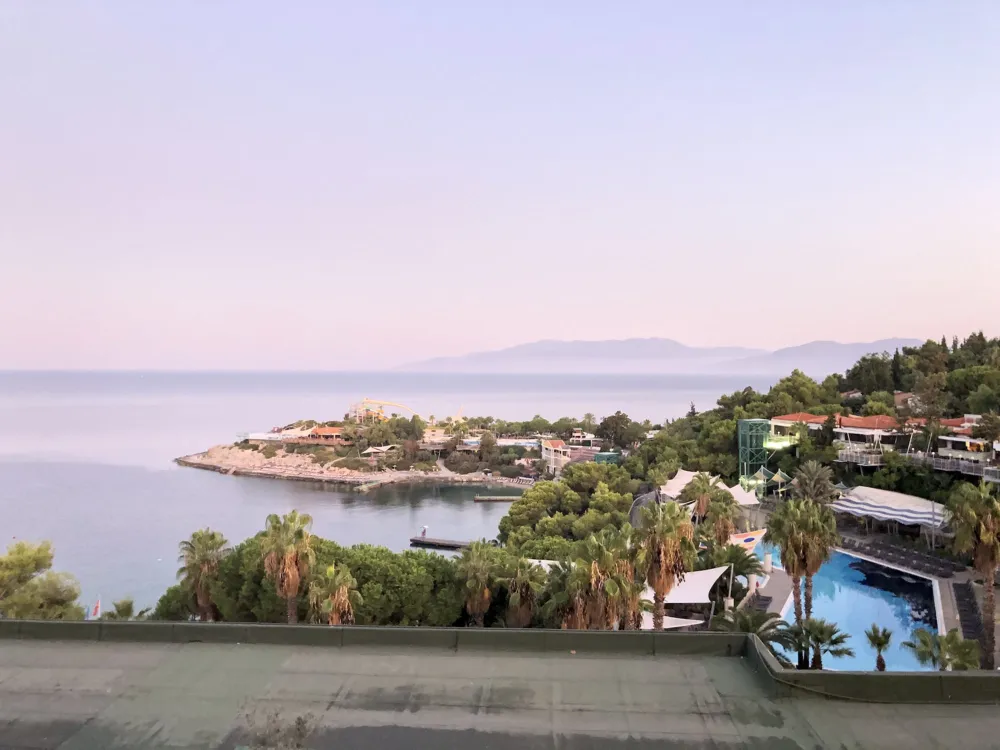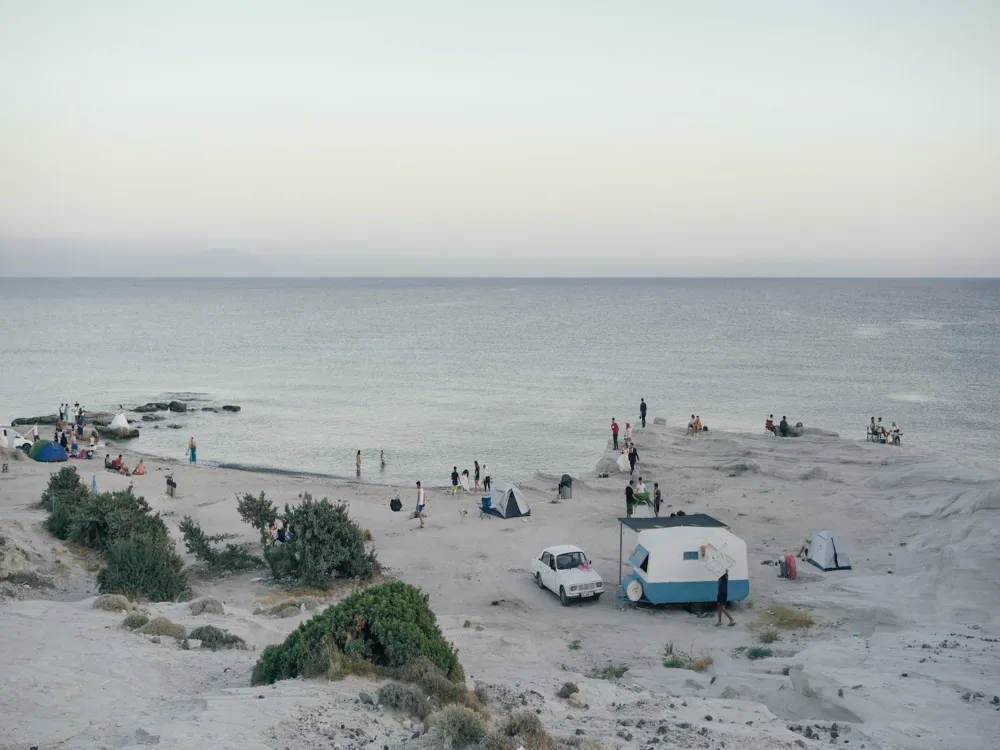Dolmabahçe Palace, a stunning architectural masterpiece, stands proudly along the European coastline of the Bosphorus Strait in Istanbul, Turkey. This magnificent palace, constructed between 1843 and 1856, served as the administrative center of the Ottoman Empire during its final years. Commissioned by Sultan Abdülmecid I, it symbolizes the grandeur and opulence of the Ottoman era, blending traditional Ottoman architecture with various European styles, including Baroque, Rococo, and Neoclassical. Covering an area of 45,000 square meters, it boasts 285 rooms, 46 halls, 6 baths, and 68 toilets, making it one of the most lavishly decorated palaces in the world. The palace's history is as rich as its architecture, having been the residence of the last six sultans of the empire. Its significance extends beyond its past as a royal residence; it also played a crucial role in the transition of Turkey from an empire to a modern republic. Dolmabahçe Palace is not just a symbol of the Ottoman Empire's power and wealth, but also a testament to its cultural and architectural prowess. Dolmabahçe Palace is a remarkable fusion of various architectural styles. Its construction marked a shift from the traditional Ottoman architectural style, incorporating European influences. This blend resulted in a unique aesthetic that set a new standard for Ottoman architecture. The palace's exterior is adorned with ornate carvings, intricate stonework, and a series of balconies and large windows that overlook the Bosphorus. Its grandeur is not limited to the exterior; the interior is equally impressive, featuring lavish decorations, including crystal chandeliers, gold and silver embellishments, and an extensive collection of European art. The palace's layout consists of three main sections: the Imperial Mabeyn (State Apartments), the Muayede Salonu (Ceremonial Hall), and the Harem-i Hümayun (Private Family Apartments). The Imperial Mabeyn was used for state affairs, the Muayede Salonu for formal ceremonies, and the Harem-i Hümayun as the private residence of the sultan and his family. Each section of the palace reflects its specific function, with varying degrees of opulence and decoration. One of the most remarkable features of Dolmabahçe Palace is the world's largest Bohemian crystal chandelier, gifted by Queen Victoria of the United Kingdom. This chandelier, weighing 4.5 tons and featuring 750 lamps, hangs in the grand Ceremonial Hall. The palace also houses a significant collection of paintings, including works by European and Ottoman artists, along with a rich array of furniture, carpets, and curtains from the 19th century. Before visiting Dolmabahçe Palace, it's important to plan ahead. The palace operates with specific visiting hours, which can vary depending on the season. It's closed on Mondays and Thursdays, so make sure to schedule your visit accordingly. Also, consider arriving early to avoid long queues, especially during peak tourist seasons. Guided tours are available and highly recommended to fully appreciate the history and architecture of Dolmabahçe Palace. These tours provide in-depth insights into the palace's past, its significance in Ottoman history, and detailed explanations of the artifacts and rooms. English tours are available, but it's wise to check the schedule in advance. Photography is restricted in certain areas of Dolmabahçe Palace. Visitors are not allowed to take photos in the harem section and some of the more ornate rooms. Always look for signage indicating photography restrictions or ask a guide or staff member if unsure. While there is no strict dress code for visiting Dolmabahçe Palace, it is advisable to dress respectfully. Comfortable walking shoes are recommended, as the palace tour involves a significant amount of walking. Dolmabahçe Palace is easily accessible by various modes of transportation in Istanbul. Visitors can reach the palace by bus, tram, or ferry. Several bus routes stop near Dolmabahçe Palace, and it's also a short walk from the Kabataş tram and ferry stations. For those preferring a scenic route, taking a ferry to the Kabataş dock offers a breathtaking view of the Bosphorus and the city skyline. Read More:Overview of Dolmabahçe Palace in Istanbul
Architectural Marvel of Dolmabahçe Palace
Experiencing the Majesty: Tips When Visiting Dolmabahçe Palace
Plan Your Visit
Guided Tours
Photography Restrictions
Dress Code
Reaching Dolmabahçe Palace: Accessibility and Transportation
Dolmabahce Palace
Istanbul
₹ 27,999 onwards
View istanbul Packages
Istanbul Travel Packages
View All Packages For Istanbul
Top Hotel Collections for Istanbul

Private Pool

Luxury Hotels

5-Star Hotels

Pet Friendly
Top Hotels Near Istanbul
Other Top Ranking Places In Istanbul
View All Places To Visit In istanbul
View istanbul Packages
Istanbul Travel Packages
View All Packages For Istanbul
Top Hotel Collections for Istanbul

Private Pool

Luxury Hotels

5-Star Hotels

Pet Friendly







